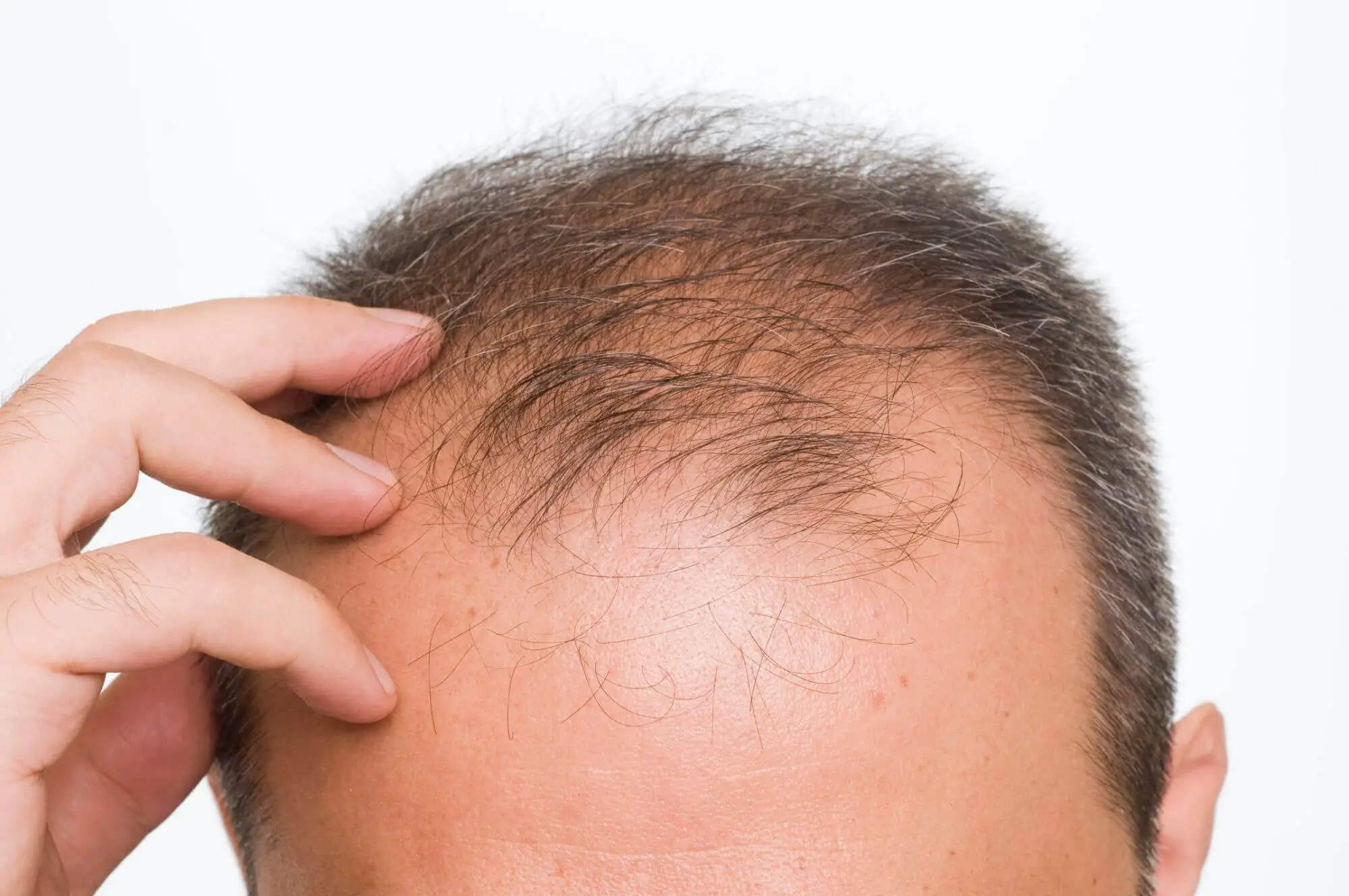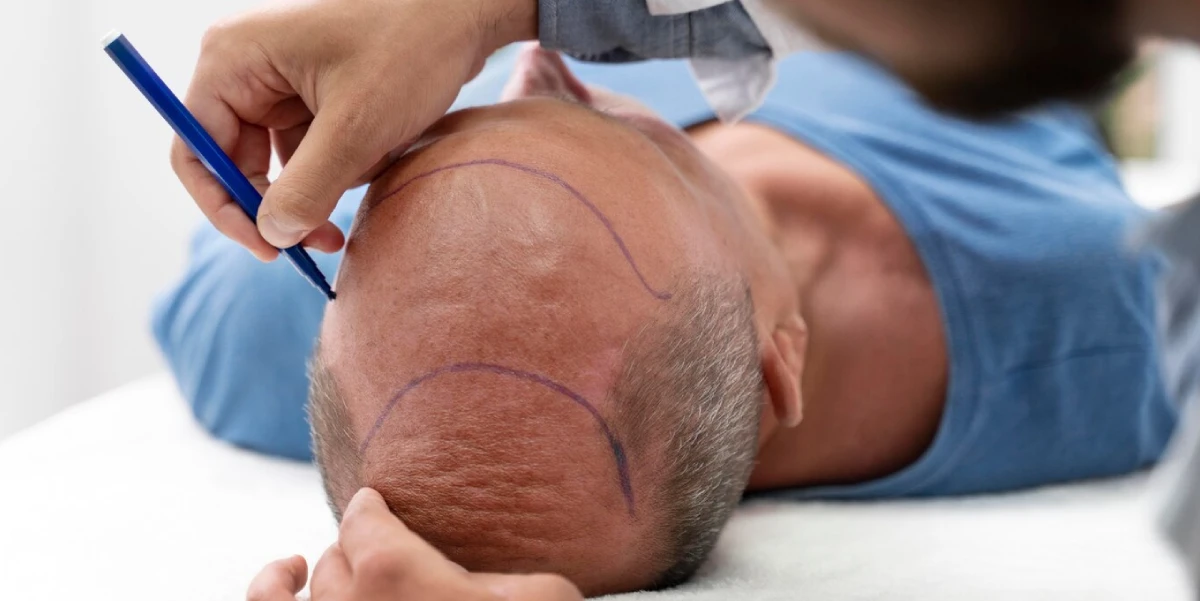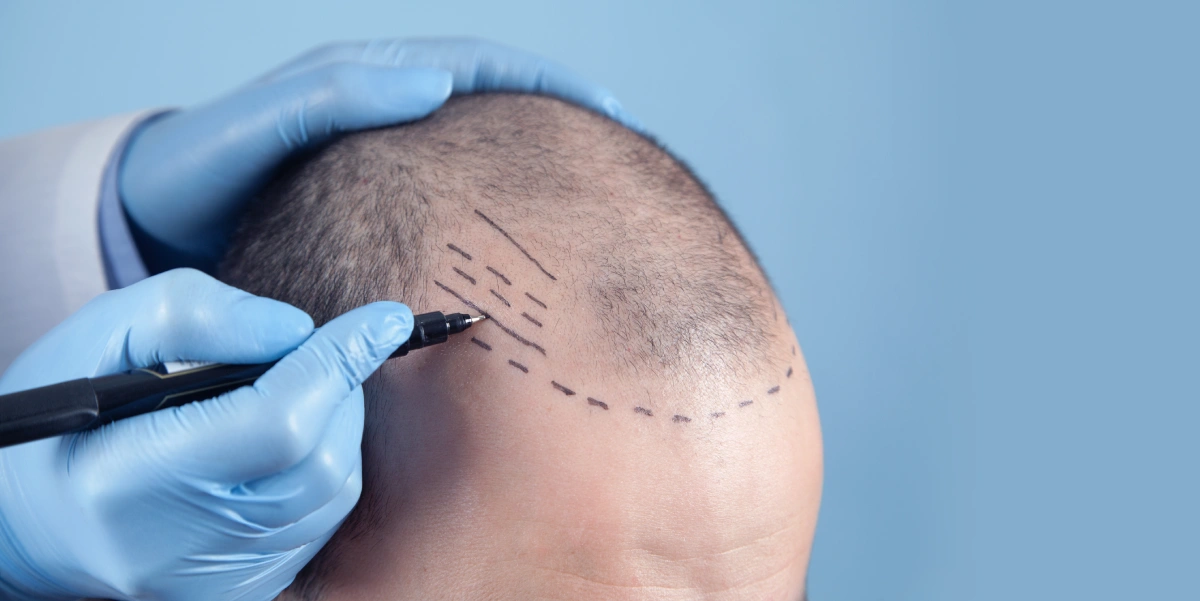All About Male Pattern Hair Loss
- By Harleys Clinic
- Feb, 02 2023
What is male pattern hair loss? Are you experiencing it? Read on to know more about it with the insights shared by a hair transplant surgeon in Mumbai at Harleys Hair Transplant Clinic.
Male pattern hair loss, also known as androgenetic alopecia, is the most common type of hair loss (alopecia) among adult males that manifests as diffuse thinning of the hair, receding hairline, or balding. This cosmetic concern can show up early in the life of men. Sometimes, it may begin in early twenties. However, most males experience it in later life, usually when they cross their mid-age.
Hair loss is an outcome of changes in the normal hair growth cycle. Normally, most hair on the scalp remains in the anagen phase (growth phase), for about 3-6 years, before they shed and get replaced with new hair. In the case of male pattern hair loss, the hair in the affected portions of the scalp has a much shorter growth phase, lasting for a few weeks or months, before it falls out and results in thinning and bald spots/patches.
Symptoms of Male Pattern Hair Loss
Male pattern hair loss tends to develop gradually, usually after puberty hits. It tends to start at the hairline, above the temples, and results in a receding hairline (forms an “M” shape). It also leads to bald spots/patches on the ‘crown’ or top of the head. A circular area on the vertex (backside of the head) often thins and grows bigger over time. Eventually, it results in the hair becoming finer, shorter, and thinner, and creates a horseshoe-shaped (U-shaped) hair growth pattern around the back and sides of the head.
Male pattern hair loss does not cause hair shedding of the back or sides of the head as well as eyelashes and eyebrows- such types of hair loss are caused by other types of hair loss or medical conditions.
If you are experiencing the similar symptoms, then consult a hair loss expert in Mumbai, Dr. Sumit Agrawal at Harleys Hair Transplant Clinic can help.
What Causes Male Pattern Hair Loss?
Male pattern hair loss is linked to heredity. It is caused by a genetic predisposition of increased sensitivity to the effects of the DHT (Dihydrotestosterone) hormone in some sections of the scalp. Dihydrotestosterone is an endogenous androgen, a hormone that plays a vital role in the development of masculine features in people assigned to males at birth. Its production is regulated by an enzyme 5-alpha reductase. Increased sensitivity to DHT are believed to shorten the anaphase phase of the normal hair growth cycle, from the usual period of 3-6 years to just a few weeks or months.
There are several genes that account for different ages of onset, patterns, progress, and severity of hair loss in family members. The susceptibility genes for hair loss are inherited in individuals from both their parents. Currently, there is no genetic test available or reliable to predict male pattern hair loss.
Male pattern hair loss is a very familiar concern among men. It can affect about 1 in 5 men who are in their 20s, 1 in 3 men who are in their 30s, and nearly 1 in every second man who is aged above 40 years. Hair fall in patients suffering from male pattern hair loss may be more if other factors are existing. These include scalp infections, hormonal imbalances, autoimmune conditions, emotional stress, and radiation therapy.
How is Male Pattern Hair Loss Diagnosed?
A classic male pattern hair loss can be easily diagnosed by a physician who will ask questions related to general health, hair loss, and any hair loss in the family. During the initial consultation with a doctor, the scalp is thoroughly examined, especially in areas of hair thinning or baldness. It can be diagnosed based on the pattern and appearance of hair loss.
In most cases, the patients would not require any special test to confirm them having male pattern hair loss. However, sometimes the general physician might refer the patient to a Trichologist (a hair specialist) for a detailed examination (folliscopy) or skin biopsy of the scalp and even other procedures to rule out other conditions that could cause hair loss.
What are the Treatment Options for Male Pattern Hair Loss?
Male pattern hair loss is a medical issue and it needs to be treated for aesthetic reasons. Its treatment is not necessary if one is comfortable with his appearance. Hairpieces (like wigs or toupees), hair weaving, or a change of hairstyle may help disguise hair loss and are the quick and affordable solution for male pattern hair loss. However, they are not permanent options and require regular maintenance session at salons. If looking for long lasting solutions, one can go for medical treatments that are known to be effective in treating male pattern hair loss. These includes:
Hair-Growth Stimulating Medications: FDA has approved certain medications to treat male pattern hair loss, that are available with or without prescription. These are topical minoxidil and oral finasteride. Mino-xidil is a pquid solution or foam that is directed to be appped 1-2 times a day for a few months to see the results. It can help increase blood flow to the scalp and stimulate hair growth. Finas-teride is a tablet that is recommended to be taken once a day. It helps reduce androgens levels that cause male pattern baldness, thereby delaying hair loss.
Growth Factor Hair Therapy: In this treatment, your own growth factor and essential proteins are injected into balding or thinning areas of the scalp, over a series of few sessions spaced a few weeks apart. The growth factor injections are prepared by first drawing a small amount of blood from the patient, centrifuging it to separate its components, and then isolating a portion that is rich in growth factor to be filled into sterile syringes. It is a minimally-invasive approach to promote new hair growth.
Hair Transplantation: This is a surgical approach wherein individual folpcular units of hair are taken from areas of healthy, thick hair growth (donor site, i.e. the back or sides of the head) and placed into the thinning or balding areas of the scalp (the recipient site). It can be done by using either of the two techniques: the traditional FUT method or strip surgery and the advanced FUE method. It is the permanent, most effective, and safest option among all which provides natural-looking results. The transplanted hair falls out after 2-8 weeks following the surgery. Patients notice results between 6-9 months post-surgery.
Is male pattern hair loss preventable?
No. Male pattern hair loss is an inherited condition; thus it cannot be prevented. However, men can prevent the worsening of their condition and maintain their scalp hair health by following a healthy lifestyle and diet.
When male pattern hair loss is still in its initial phases, there are some effective treatments available. Therefore, if you are concerned about your hair loss, it's recommended to soon consult a hair transplant expert at Harleys Hair Transplant Clinic, hair transplant clinic in Mumbai and get treated accordingly by an expert before it starts to embarrass you.






